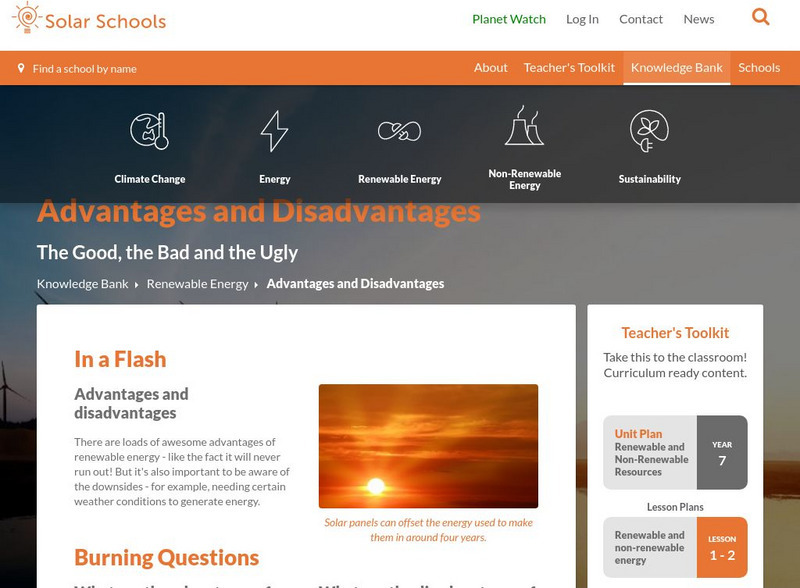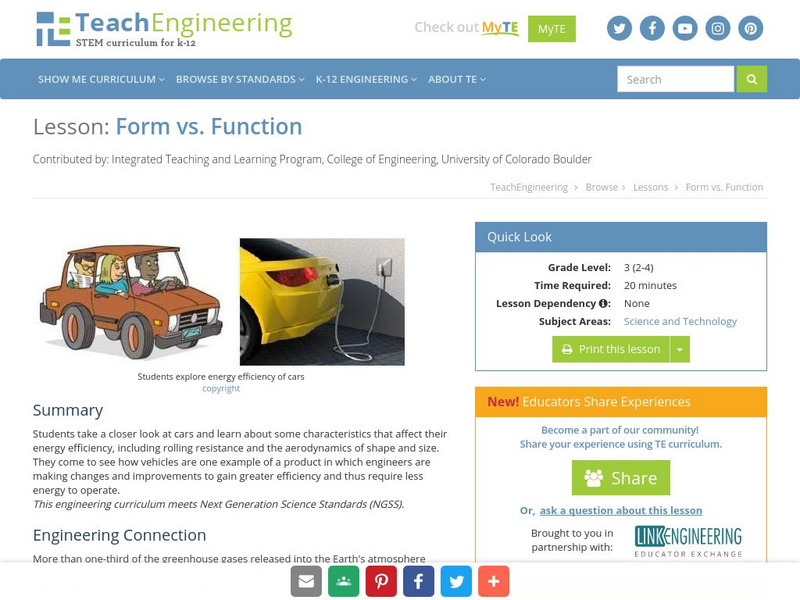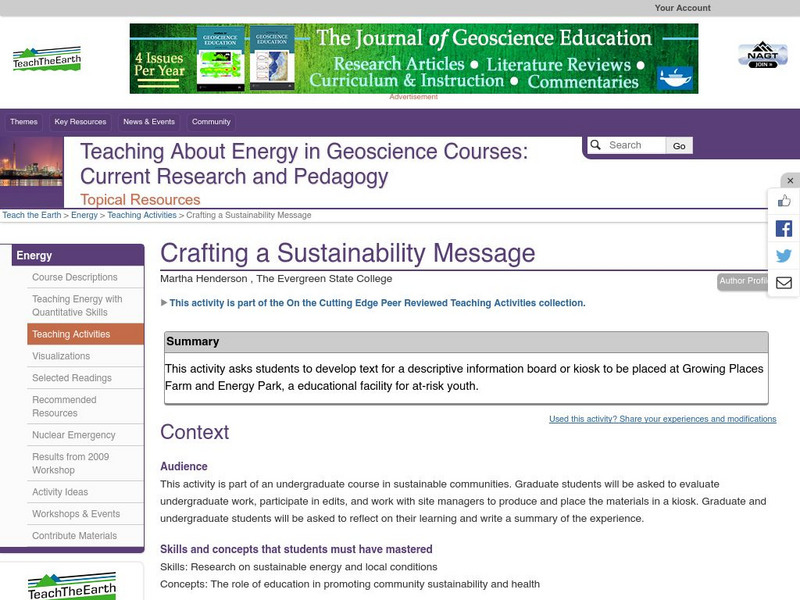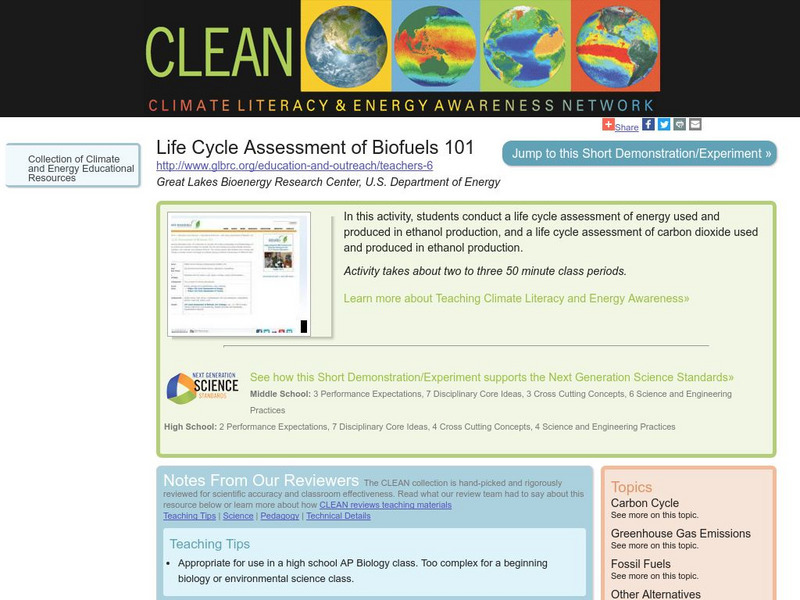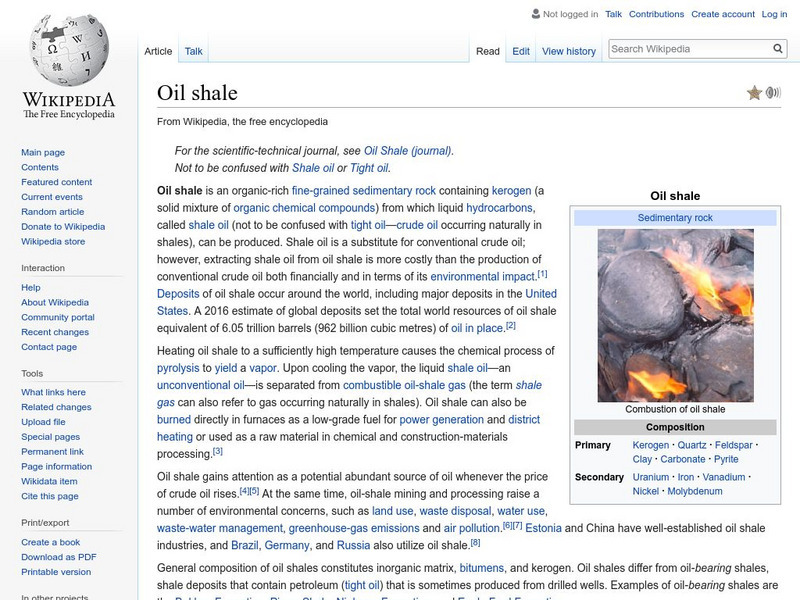Other
Solar Schools: The Advantages and Disadvantages of Renewable Energy
One major advantage with the use of renewable energy is that as it is renewable it is therefore sustainable and so will never run out. Renewable energy facilities generally require less maintenance than traditional generators. Their fuel...
US Energy Information Administration
U.s. Eia Energy Kids: Coal
Easy-to-understand information on mining and transporting coal, producing it, uses of coal, and coal and the environment.
Science Education Resource Center at Carleton College
Serc: The Climate Business Game
CEO2 is a role-playing game that helps students explore different business strategies in order to maximize profit, significantly cut CO2 emissions, and develop low-carbon products by 2030.
Energy for Sustainable Development
Kids and Energy: Hydro Energy
Hydropower is a clean, renewable and reliable energy source which converts kinetic energy from falling water into electricity, without consuming more water than is produced by nature. Quite simply the oldest method by which renewable...
National Academies of Sciences, Engineering, and Medicine
The National Academies: Emerging Technologies: Biofuels
Biofuels are made from organic materials such as corn and algae, as well as sugars and starches from plant cellulose. They have advantages such as sustainability and lowered greenhouse gas production, but they can impact on the...
TeachEngineering
Teach Engineering: Form vs. Function
Students take a closer look at cars and learn about some characteristics that affect their energy efficiency, including rolling resistance and the aerodynamics of shape and size. They come to see how vehicles are one example of a product...
NC State University
Ncsu: What Will Be Left of Earth's Non Renewable Resources?
An interactive graph that predicts how many years until more than two dozen natural resources (e.g., chromium, oil, tin, coal, etc.) are depleted, based on current production rates or production that grows each year. Use the slider at...
TeachEngineering
Teach Engineering: Corn for Fuel?!
In this activity, students examine how to grow plants the most efficiently. They imagine that they are designing a biofuels production facility and need to know how to efficiently grow plants to use in this facility. As a means of...
Science Education Resource Center at Carleton College
Serc: Crafting a Sustainability Message
This activity asks students to convey a sustainability message by developing text for a descriptive information board or kiosk to be placed at Growing Places Farm and Energy Park.
TeachEngineering
Teach Engineering: Rolling Blackouts & Environmental Impact
The goal is for the students to understand the environmental design considerations required when generating electricity. The electric power that we use every day at home and work is generated by a variety of power plants. Power plants...
US Department of Energy
U.s. Department of Energy: Wind Energy
This short site provides an overview of wind power, along with links to technical information on wind power, history of wind power, and more.
Climate Literacy
Clean: Life Cycle Assessment of Biofuels 101
Multi-lesson activity in which students conduct a life cycle assessment of energy and carbon dioxide used and produced in ethanol production.
Other
Oresome Resources: Mining Helps Make Your House Interactive
An interactive activity for you to find out how much your lifestyle depends on mining. Students select household items and learn facts about their chemical nature, properties and uses, their origins in the Earth, mining, and production.
TeachEngineering
Teach Engineering: Win That Bid! Selling Your Power Solution
A large part of engineering involves presenting products, concepts, and proposals to others in order to gain approval, funding, contracts, etc. The purpose of this activity is to fine-tune students' presentation skills while allowing...
TeachEngineering
Teach Engineering: Environment
Through 10 lessons and more than 20 hands-on activities, students are introduced to the concept of an environment and the many interactions within it. As they learn about natural and human-made environments, as well as renewable and...
Other
Bc Hydro: Generation System
Gives a clear explanation of how BC Hydro's electric generation system and thermal generating system work. Its transmission and distribution systems are also explained. There are maps showing where facilities and dams are located, but...
National High Magnetic Field Laboratory
Magnet Academy: Fluorescent Lamp 1934
Compared to incandescent lamps, fluorescent lamps last longer, require less energy and produce less heat, advantages resulting from the different way in which they generate light.
Wikimedia
Wikipedia: Oil Shale
When converted to petroleum, oil shale is a valuable resource produced by many countries around the world, including the U.S. Wikipedia discusses the geology, history, economics, and environmental considerations of oil shale.
Climate Literacy
Clean: Evaluating Woody Biomass Options for North Carolina's Electricity Future
In this activity, students learn about the pros and cons of co-firing woody biomass fuels with coal to produce electricity.
National Academies of Sciences, Engineering, and Medicine
The National Academies: Emerging Technologies: Advanced Coal Technologies
Coal is still widely used in energy production but is responsible for a third of the carbon dioxide emissions in the United States. New technologies, described here, are being developed to reduce or eliminate these emissions.
TeachEngineering
Teach Engineering: Engineering for the Earth
Young students are introduced to the complex systems of the Earth through numerous lessons on its natural resources, processes, weather, climate and landforms. Key earth science topics include rocks, soils and minerals, water and natural...
Curated OER
Educational Technology Clearinghouse: Maps Etc: Northeast China, 1971
"Northeast China - the provinces of Heilungkiang, Kirin, and Liaoning - is the most important region of the country and a nationally significant and still-developing center of agricultural production. Most of the Northeast remained...
